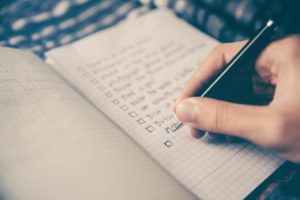
This past week was National Sleep Week. Quite appropriate timing as you also still might be recovering from that precious lost hour after Daylight Saving Time.
So along with National Doughnut Day and National Pancake Day (yes, these delicious days do exist), I think National Sleep Week is a fine idea. Frankly, sleeping is one of my favorite pastimes and, if you haven’t celebrated yet, now is the time: You deserve to celebrate Sleep Week by curling up for a nap and taking a long snooze (though, preferably after reading this article and not throughout…)
As we all try to juggle our daily demands, more often than not, we skimp on sleep in order to check off everything on our to-do lists. In fact, according to The Sleep Foundation’s 2018 Sleep in America® Poll, 2/3 of those surveyed reported that with more sleep they found themselves considerably more productive the next day, and yet, only 10% of people in this survey actually made sleep a priority.
It certainly seems that we like to punish ourselves because despite knowing sleep is imperative for our health, peace of mind, and productivity, we still have trouble getting the right amount of rest. In the U.S. 50-70 million adults suffer from a sleep disorder and 37.9% of Americans reported unintentionally falling asleep during the day. Not great if you’re looking for that promotion or, well, operating a motor vehicle. The typical adult needs between 7 and 9 hours of sleep each night, and if you are one of the many cheating yourself out of a good night’s rest, or simply have trouble falling asleep, here are 5 tricks to help you get the proper amount of zzz’s.
1. Create a Bedtime Ritual

We are creatures of habit. Creating a consistent bedtime ritual will help signal your mind and body that you are preparing for sleep. Your ritual should be calming and something that you will enjoy and stick with. For instance, you could go for a relaxing stroll, take a warm bath, practice meditation, read, or listen to soothing music. Also, practice going bed and waking at the same time each day as it will get your body into a routine and help you fall asleep faster.
2. Get Rid of the Blue Screens

This one is always the hardest for me to put into practice. It’s easy to get sucked into Reddit or fall down a Wikipedia hole. However, for the best sleep it is ideal to put the electronics away an hour before you’re ready to go to bed. It’s the blue light emitted from our screens that messes with our circadian rhythms and suppresses melatonin making it more difficult for us to have a restful night’s sleep. So as you wind down for the night, try using the red-light bedtime feature on your devices as reds on the light spectrum interfere the least with our natural rhythms and melatonin production.
3. Make a To-Do List

If you find your mind is still racing when you try to fall asleep, one trick is to make a detailed to-do list for the next day. Creating the list and putting it down on paper helps take away some of the stress and worry of the tasks you have to accomplish the following day helping to empty your mind and clear negative thoughts.
4. Progressive Muscle Relaxation Technique

The American Sleep Association recommends this technique to relieve the tension in your muscles, which in turn, relieves the tension in your mind allowing you to relax enough to fall asleep.
To perform this technique, begin by breathing in slowly and deeply for a minute. Then take a deep breath, tense your toes for 3 to 4 seconds, and then slowly exhale while releasing the tension in your feet. Repeat this technique working your way up your body (legs, abdominal, lower back, upper back, chest, arms, hands, ending with your shoulders and neck). Breathe in, and while holding your breath, tense your muscles and then exhale your breath while releasing the tension in your muscles. You’ll be asleep in no time.
5. 4-7-8 Breathing Technique

This relaxing breathing technique created by Dr. Andrew Weil is perfect for calming your system as you get ready for sleep. Dr. Weil describes this breathing exercise as a natural tranquilizer for your nervous system that will help with sleep and stress.
Here’s how you do it:
Place the tip of your tongue against the ridge of tissue just behind your upper front teeth, and keep it there through the entire exercise.
- Exhale completely through your mouth, making a whoosh sound.
- Close your mouth and inhale quietly through your nose to a mental count of four.
- Hold your breath for a count of seven.
- Exhale completely through your mouth, making a whoosh sound to a count of eight.
- This is one breath. Now inhale again and repeat the cycle three more times for a total of four breaths.
Bonus Tip:
Another way to help guarantee a good sleep is essentially to tucker yourself out during the day, i.e. be active during the day. Exercising and getting outside in the sunlight helps you expend energy, making you sleepier for the evening.
















